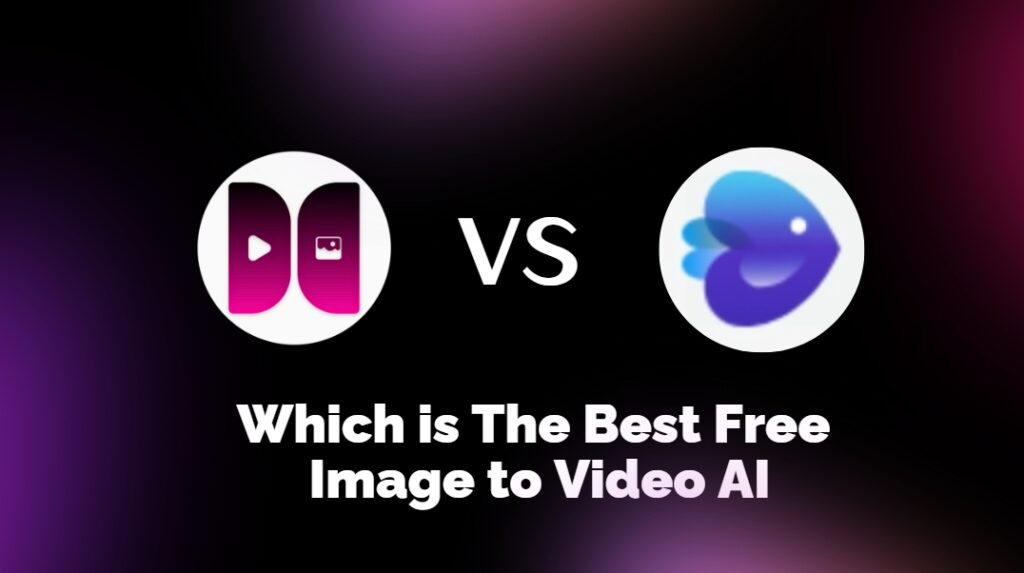
Now, short videos have become the mainstream of content creation, but not everyone can edit or make animations. Many people have such a demand: Can you use a picture to generate a good-looking dynamic video with one click? The emergence of AI image to video technology has made this idea a reality.
However, Image to Video AI tools vary in quality. Many Image to Video AI solutions require manual animation adjustments, lack intelligent automation, and suffer from image quality issues like blurring and artifacts. Additionally, some Image to Video AI tools offer limited animation styles, restricting creative flexibility.
So, which Image to Video AI tool is better? ImageMover and InVideo AI, both popular Image to Video AI options, have their pros and cons. ImageMover excels in smooth AI animation and natural motion, while InVideo AI focuses on template-driven video creation. This article compares their features, ease of use, and image quality to help you choose the best Image to Video AI for your needs.
Contents
ImageMover and InVideo AI Overview
What is imagemover?
ImageMover is an AI-driven Image to Video AI platform that transforms static images into dynamic videos using advanced AI and intelligent animation. It offers high-resolution output, making it ideal for social media short videos, animation, film effects, and marketing, enhancing AI-generated video creation with efficiency and ease.
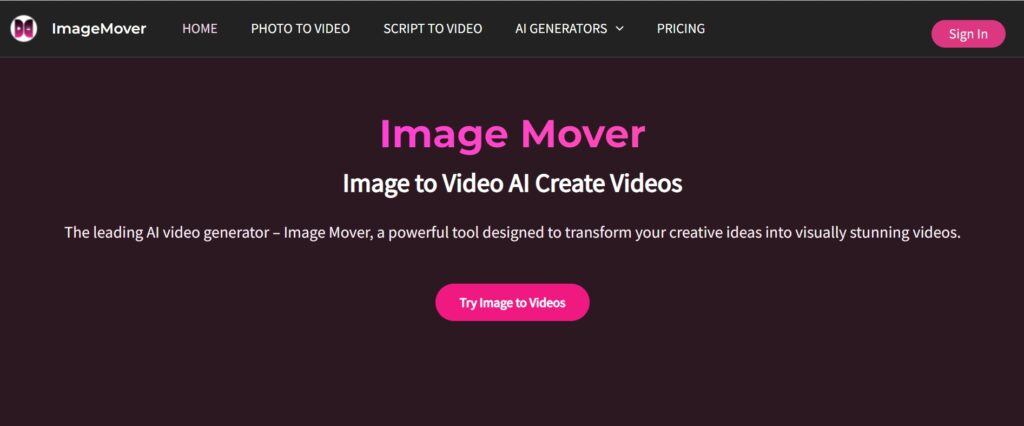
How to use ImageMover
- Upload pictures: Select and upload the video pictures you want to animate. Multiple formats are supported. It is recommended to use high-definition pictures for better results.
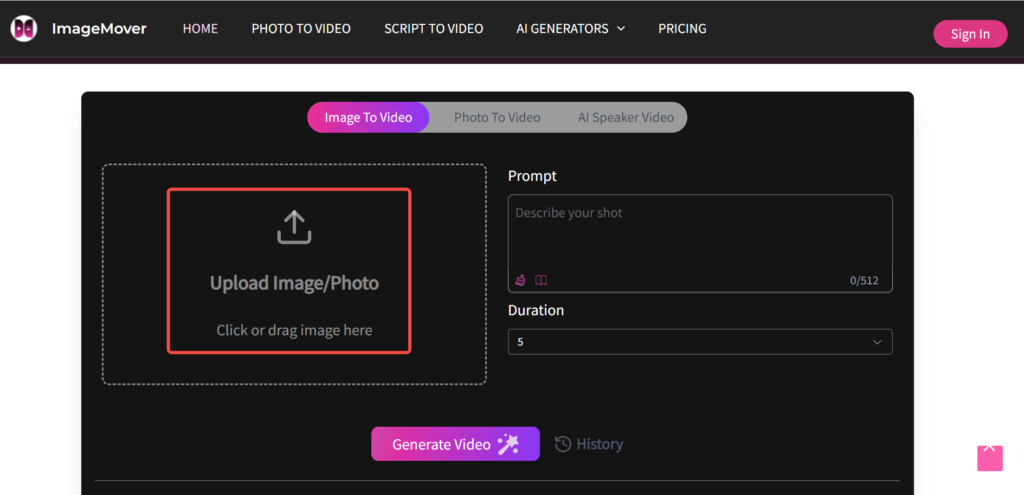
- Add description: Enter a text description as detailed as possible to guide AI to generate dynamic visuals that meet expectations.
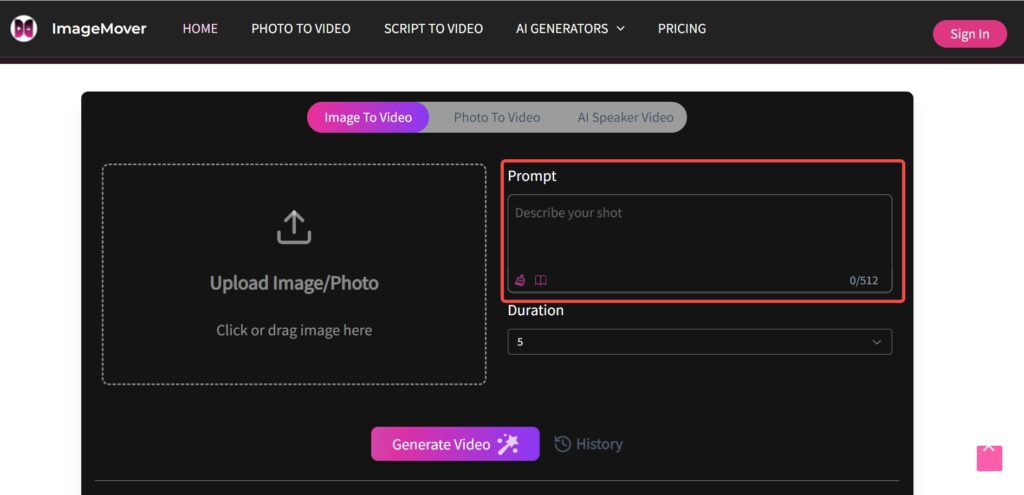
- Generate video: Generate a video with one click, no need to wait, and quickly produce the film
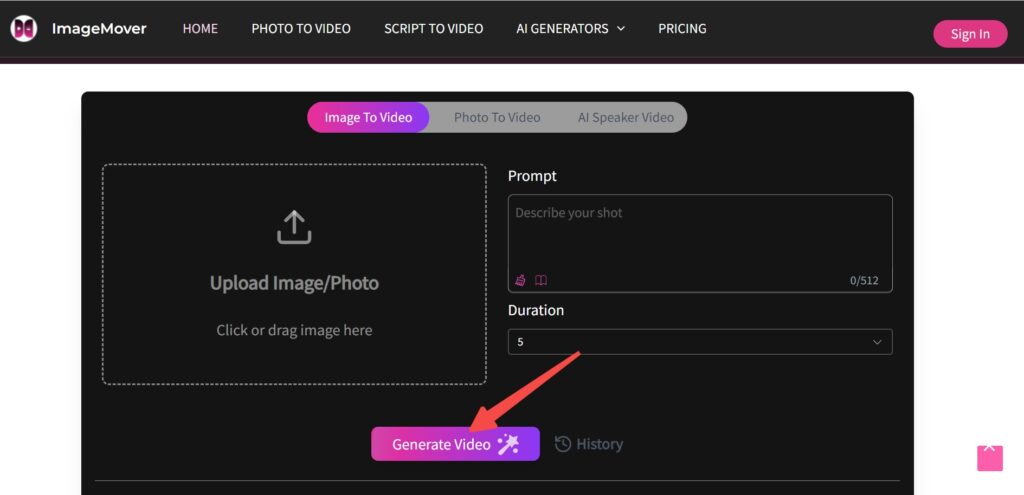
- Download and share: Save the generated video and download it in MP4 format. You can share it on social platforms such as Twitter and Instagram.
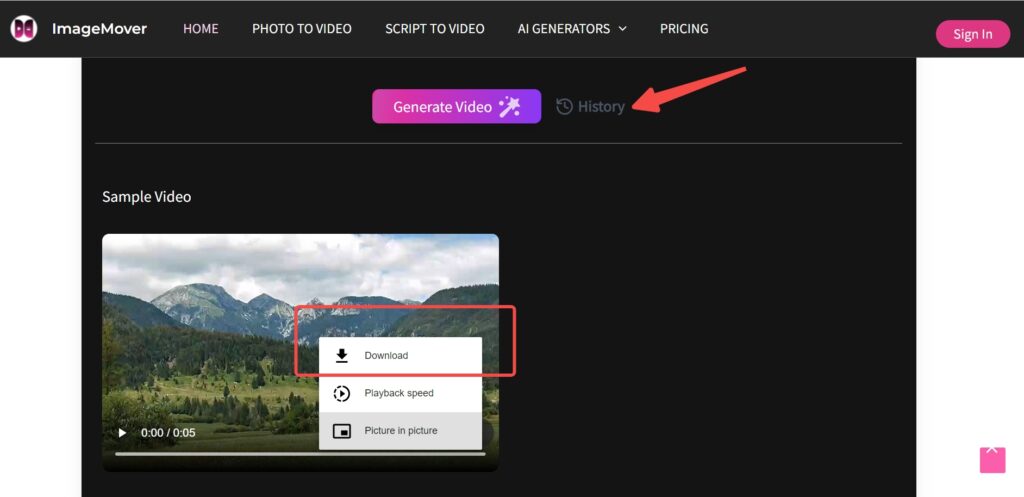
What is Invideo AI?
InVideo AI, an Image to Video AI platform, offers rich templates and intelligent tools for quickly creating high-quality videos. It supports functions like text to video, image to video AI, and AI voice cloning, ideal for marketing, advertising, and content creation. With its user-friendly interface, InVideo AI helps non-professionals create professional-level videos easily.
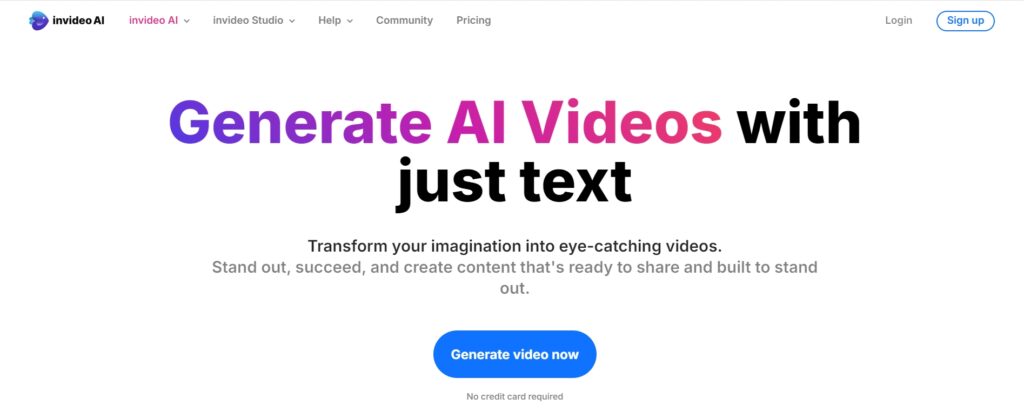
Comparison Between ImageMover and Invideo AI
| Select Dimensions | ImageMover | InVideo AI |
| Core Features | Image to Video | text to Video |
| Video Quality | Beautiful details and smooth animations | Automatic template synthesis |
| Cost effectiveness | Free version without watermark, high resolution | Paid version to unlock full features, free version has watermark |
| Operation experience | Simple interface, suitable for beginners | There are many options and learning costs are required |
| Usage scenarios | Suitable for artists, photographers, brand designers | Suitable for marketing, education, news creation |
Core function comparison
Imagemover is the core function of image to video, which can convert static images into dynamic videos. It is suitable for users with a large number of image materials. It can add animation effects, transitions and background music through AI technology to make static images vivid and expressive.
InVideo AI focuses on text-generated videos. Users only need to enter text content, and AI can automatically match video materials to generate complete videos.
Video quality comparison
In terms of video quality, Imagemover pays more attention to detail processing and can accurately adjust animations and visual effects to make videos more exquisite, which is suitable for users who need high-quality visual presentation.
InVideo AI relies on automated templates for video synthesis, which has high fluency and is especially suitable for long videos or batch generation of videos. Although it may not be as fine as Imagemover in terms of detail performance, it can complete large-scale video production.
Cost-effectiveness comparison
Imagemover has obvious advantages in terms of cost performance, especially the free version supports watermark-free downloads and high resolution, which is very attractive to individual users and small businesses with limited budgets. Its premium paid version provides richer features, such as higher resolution, finer animation control, etc.
Although InVideo AI is a free Image to Video AI tool, its free version has watermark restrictions, requiring a paid subscription to unlock full functionality.
Operation experience comparison
In terms of user experience, ImageMover, an Image to Video AI tool, is beginner-friendly with a simple interface. Users can quickly generate videos by uploading pictures, requiring no complex settings or video editing skills.
InVideo AI provides a large number of templates and automation tools, but due to the large number of options, novices may need to spend some time to familiarize themselves with the interface and functions.
Comparison of usage scenarios
Imagemover is suitable for users who have static image materials and want to convert them into dynamic videos, such as artists, photographers, brand designers, etc., and is widely used in social media, product display, brand promotion and other fields.
InVideo AI is more suitable for users who rely on text content creation, such as marketers, educators, news creators, and is especially suitable for scenes that require fast video generation, such as advertising marketing, news videos, and online courses.
Creator Selection Guide: How to choose the right AI tool for your image-generated video?
After understanding the advantages of both, the next key question is: As a creator, how do you choose the most suitable Image to Video AI tool for your needs? This guide provides a comprehensive reference, considering creative goals, video types, technical requirements, creator experience, and budget, to help you make the best choice among Image to Video AI solutions.
Creative goals:What features do you want your video to have?
Different creative goals determine the type of tools you need. Thinking clearly about your video goals will help you select the most suitable tools.
- If your goal is to quickly create a dynamic video, choose ImageMover
ImageMover offers a simple process to convert pictures into videos in minutes, focusing on adding natural, smooth motion effects. It’s ideal for quickly creating short videos and enhancing social media content. For social media creators or short video bloggers, ImageMover adds vivid motion to your content without complex editing.
- If your goal is to tell a complete story, choose InVideo AI
If you need to tell a story through video, combined with text, images, and animation effects, InVideo AI, an Image to Video AI tool, provides more custom options and video templates. It allows adding background music, subtitles, transition animations, and other elements to help you create a video with rich plots and strong layers.
Video type:Are you making short videos or long videos?
Different video types have different requirements for AI tools. Understanding the length and content structure of the videos you make will help you choose the right tools.
- If you are making short videos, choose the recommended option: ImageMover
Short video creation usually requires fast and efficient tools, and ImageMover, an Image to Video AI tool, has a natural advantage in this regard. It can add dynamic effects to static images, enhance visual impact, and quickly produce dynamic short videos. Whether you are making product demonstrations or social media content, ImageMover’s simplicity and speed help you easily create eye-catching short videos.
- If you are making longer video content, choose the recommended option: InVideo AI
For long video creation , InVideo AI, an Image to Video AI tool, provides powerful templates and animation editing functions. It allows you to add multiple scenes, illustrations, text, and sound effects, enhancing the narrative. If your goal is to create more complex, information-rich videos, InVideo AI helps efficiently manage multiple elements, ensuring smoothness and creative expression.
Budget:How much are you willing to invest in the tool?
The charging model and functional differences of AI image-to-video tools may affect your choice. Understanding your budget range is very important for choosing a tool.
- If you have a limited budget and want to save costs, choose the recommended option: ImageMover
ImageMover offers different payment plans, which are suitable for creators with limited budgets. Its basic functions are sufficient for daily use, so it is cost-effective. If you only need to generate simple dynamic effects and do not pursue too many complex editing functions, ImageMover will be an affordable choice.
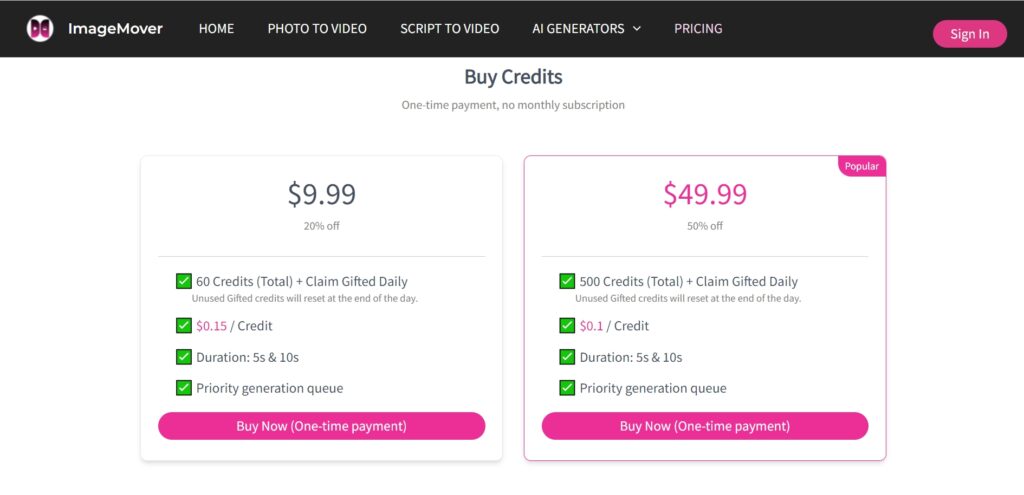
- If you have a higher budget and are willing to invest in more powerful functions, choose the recommended option: InVideo AI
InVideo AI provides a wide range of functions, which is suitable for creators who want to do in-depth creation and are willing to pay for it. Although its cost is slightly higher than ImageMover, the use of advanced templates, animation effects and customization functions will greatly improve your video creation level accordingly, which is suitable for creators who invest in video content creation for a long time.

Technical requirements:How much customization and advanced features do you need?
Different creators have different levels of technical mastery. Some creators want more customization options, while others want the tool to automate everything.
- If you want to simplify operations and complete them quickly, choose Recommended: ImageMover
One of the main features of ImageMover is its minimalist operation. You upload an image and select a dynamic template, and AI automatically generates a video. It is suitable for creators with low technical requirements, especially those who want to complete the work in a short time. For most social media content creators, ImageMover can fully meet the needs.
- If you need more creative control and customization options, choose Recommended: InVideo AI
InVideo AI provides more rich features, such as different templates, animation effects, text conversion and sound effect support. You can adjust the details of each scene according to your creative needs, with a higher degree of customization. For creators who want to play with depth in both visuals and stories, InVideo AI provides more freedom to meet your high creative requirements.
Creator experience:Are you a novice or an experienced creator?
If you are a novice, it is particularly important to choose a tool that is easy to use, while experienced creators may pay more attention to the flexibility and depth of the tool.
- If you are a novice in video production, choose the recommended option: ImageMover
For creators without video editing experience, ImageMover provides an extremely simple user experience. You only need a few simple operations to complete the image-to-video conversion. Its high degree of automation and intelligence can greatly reduce the learning cost, allowing you to easily produce professional-level videos, which is suitable for beginners.
- If you are a creator with some video production experience, choose the recommended option: InVideo AI
If you already have some video editing experience, the rich functions and customization options of InVideo AI, an Image to Video AI tool, will help you create more sophisticated works. You can realize your creativity by editing templates, adjusting dynamic effects, and adding complex visual effects. It is suitable for users with a creative foundation who want to further improve video quality.
Overview: How to make the final choice?
| Select Dimensions | ImageMover | InVideo AI |
| Creative goals | Quickly create dynamic videos | Telling the full story |
| Video Type | Short videos, social media content | Long videos |
| Technical requirements | Simple and fast | Need rich animation and editing capabilities |
| Creator Experience | Beginner, no editing experience | Experienced creators who need more control |
| Budget | Low cost, free version available | Higher cost,Paid plans are expensive |
How to use AI to get the best results for image-generated videos: Tips and tricks
When using AI for image to video creation, you can start from the following aspects to get the best results:
Optimize character and body dynamics
Clear full-body photos: If the goal is to generate complete body movements using Image to Video AI, it is recommended to choose pictures with an upright posture and unobstructed body parts, such as arms hanging naturally or slightly spread out, to avoid cross-obstruction that causes AI to misjudge hand movements.
Unobstructed face: Make sure the facial features are clearly visible, and avoid hands, hair, or accessories (such as sunglasses, hat brims) blocking the eyes or mouth, as Image to Video AI may not accurately recognize changes in facial expressions.
Appropriate space left blank: Ensure that there is a certain distance between the character and the edge of the picture to avoid the body being cropped during generation and affecting the dynamic range.
Optimize detail clarity and resolution
High resolution first: HD images above 1080p are recommended to avoid low-resolution images that cause AI to misjudge edges or generate blurred animations.
Avoid over-compression: Over-compressed JPG files may lose details. It is recommended to use lossless formats such as PNG and TIFF to improve analysis accuracy.
Balanced light and shadow: Avoid overexposed or dark images. It is recommended to choose materials with uniform light to reduce unnatural color blocks or shadow anomalies generated by AI.
Summary
Image to Video AI covers multiple brands, among which ImageMover focuses on fast generation of dynamic videos, which is suitable for short videos on social media and brand promotion. It is easy to operate and suitable for novices. InVideo AI focuses more on storytelling and custom creation, which is suitable for long video production such as corporate marketing and educational videos.
In terms of budget, ImageMover Free Edition has a higher cost-effectiveness, while InVideo AI is more suitable for commercial users to create batches efficiently. In the future, with the continuous advancement of Image to Video AI technology, these tools will further optimize the creation experience and provide more intelligent and efficient solutions for more users.